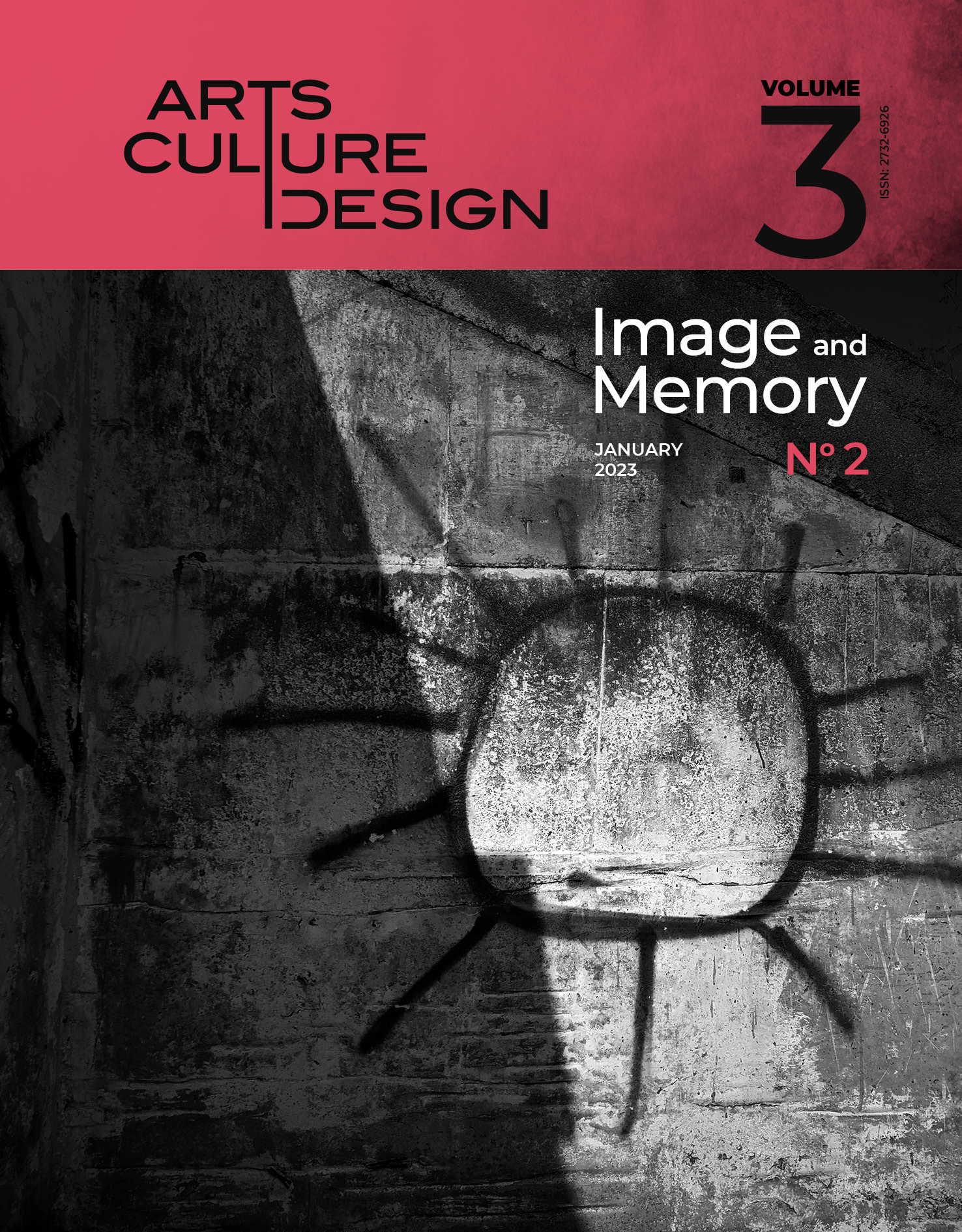THE PICTURE AS A RESULT OF MEMORY IN NEMERE KEREZSI'`S ART
Abstract
In this paper I focus on a case study concerning Nemere Kerezsi’s artistic approach presented in the exhibition Nemere Kerezsi: Thiemann-Etüde (Quadro Gallery, Cluj-Napoca, 13th of May – 24th of June 2022). The aim of this article is to analyze the close relationship between memory and image, starting from the way the artist observes and researches the memory and narratives created around places, which he claims as the central resource for the creation of his works present in the Thiemann-Etüde exhibition. The artist systematically starts from the micro framework of personal memories and narratives, which are then recorded and reproduced, through suggestive images, for the macro framework of the Anthropocene topic of the current history. Thus, the theoretical debates on the issue of the Anthropocene are relevant in this context, because the artist captures through a diversified visual language (video, photography, sculpture, installation etc.) the cultural-artificial intervention of man on nature and the consequences of this intrusion. Starting from the premise that the natural environment and history present themselves more and more as a result built on the basis of the interconnection of people who fabricate communities, Nemere Kerezsi developed his artistic approach similar to anthropological research. Namely, the artist collects subtle data about the personal memory of different places he’s visited, in order to generate the “image of an experience”.
Article Details
- Zitationsvorschlag
-
Anastasiei, I. (2023). THE PICTURE AS A RESULT OF MEMORY IN NEMERE KEREZSI’`S ART. Design/Arts/Culture, 3(2), pp. 65–79. https://doi.org/10.12681/dac.31333
- Rubrik
- Articles

Dieses Werk steht unter der Lizenz Creative Commons Namensnennung - Nicht-kommerziell - Weitergabe unter gleichen Bedingungen 4.0 International.
The copyright for articles in this journal is retained by the author(s), with first publication rights granted to the journal. By virtue of their appearance in this open access journal, articles are free to use (with the exception of the non-granted right to make derivative works) with proper attribution for non-commercial uses (licence Creative Commons 4.0). EKT/NHRF retains the worldwide right to reproduce, display, distribute, and use articles published in DAC in all formats and media, either separately or as part of collective works for the full term of copyright. This includes but is not limited to the right to publish articles in an issue of the Journal, copy and distribute individual reprints of the articles, authorize reproduction of articles in their entirety in another EKT/NHRF publication, and authorize reproduction and distribution of articles or abstracts thereof by means of computerized retrieval systems.
DAC journal considers all submitted artwork on the condition author(s) confirm that third-party intellectual property rights are not violated in any way.
Author(s) are responsible for securing permissions to publish copyrighted material, such as photographs and other artwork and for paying any fees involved. Production of an article will not begin until the editor has received all relevant permissions.
The copyright for published articles in Design | Arts | Culture is retained by the author(s). By virtue of their appearance in this open access journal, articles can be used freely, with proper attribution, for educational and other non-commercial purposes.



